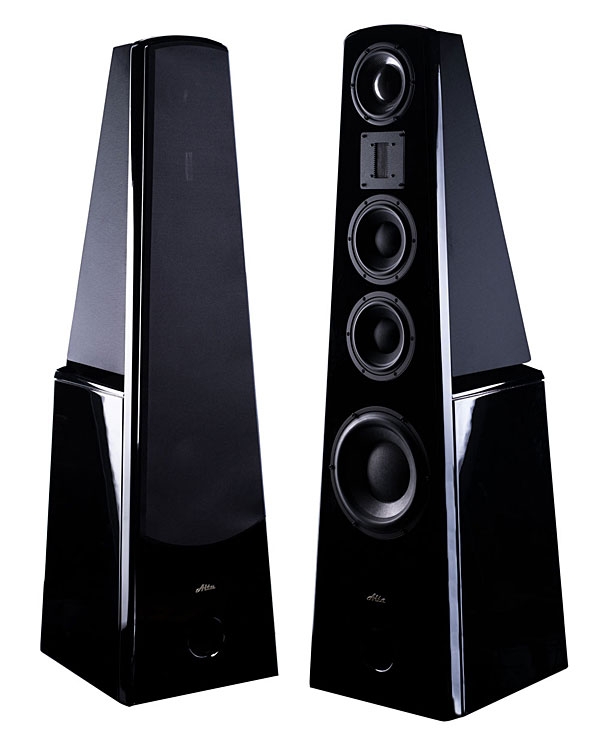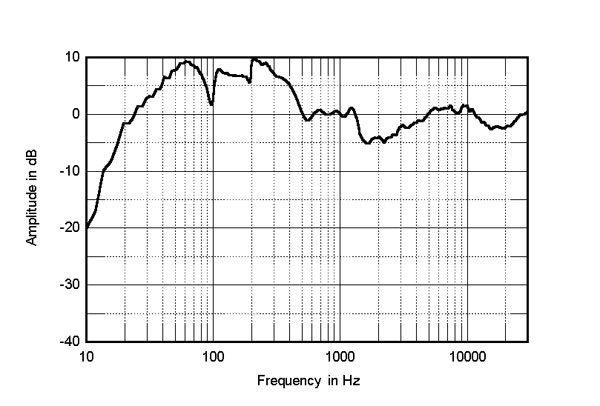As reviewed in Stereophile January 4, 2018:
Well, this is an interesting set of choices, I'm still trying to wrap my head around the measurements:


Well, this is an interesting set of choices, I'm still trying to wrap my head around the measurements:


To my untrained eye, this looks like the speaker maker took several different approaches to dispersion control, without necessarily finding an integrated whole, but hey, what do I know??
The design is claimed to be a 3-way, though the top mid-woofer is open baffle and Morel, the bottom mid-woofers are sealed and Dayton.
As far as I can tell, the creator is attempting a quasi-open baffle AND a line source at the same time. Also, while the step response is ideal, the frequency is not, telling me the designer prioritized phase matching over amplitude matching, with no explanation for why he could not do both.
Next, if you are going to use mid-woofers, why oh why attempt to pull the Raal tweeter down so low, and so poorly?
Don't get me started on the port.
As far as I can tell, the creator is attempting a quasi-open baffle AND a line source at the same time. Also, while the step response is ideal, the frequency is not, telling me the designer prioritized phase matching over amplitude matching, with no explanation for why he could not do both.
Next, if you are going to use mid-woofers, why oh why attempt to pull the Raal tweeter down so low, and so poorly?
Don't get me started on the port.
The article states that the three mid-woofer's outputs are identical. How is this even possible??
Also note the absolutely punishing minimum impedance: Under 2 Ohms around 280Hz. Ouch.
The impedance rise from 1KHz to 10 kHz is likely due to the twetter which is mostly inductive, perhaps in keeping with Raal's philosophy to minimize the HP filter, it probably has 1 cap followed by the tweeter's transformer. As they say in Twitter - "I have questions."
BTW - Normally I find it uncouth to rag on a speaker design like this, certainly in the DIY world, but for $34k a pair, anything that measures this curiously needs to expect some sort of critical discussion.
Also note the absolutely punishing minimum impedance: Under 2 Ohms around 280Hz. Ouch.
The impedance rise from 1KHz to 10 kHz is likely due to the twetter which is mostly inductive, perhaps in keeping with Raal's philosophy to minimize the HP filter, it probably has 1 cap followed by the tweeter's transformer. As they say in Twitter - "I have questions."
BTW - Normally I find it uncouth to rag on a speaker design like this, certainly in the DIY world, but for $34k a pair, anything that measures this curiously needs to expect some sort of critical discussion.
Last edited:
And they cost 32.000$/pair in USA. In my eyes this is one of the worst ever attempts for a hifi-loudspeaker. Over-engineered without real understanding and control of acoustics and loudspeaker design. In the spcification bass is said too be aperiodic, but we see a regular reflex tube. Bass cabinet resonations at 100/200Hz on the other hand look like poor aperiodic "tuning" Pairing a dipole mid with double closed mid drivers is a mess of interferences like the author said in the footnote... Voicing is bass-heavy and impedance is like a rollercoaster.
I raise my hat for Stereophile staff, the article is very polite but with some criticism based on measured data and listening impressions.
I raise my hat for Stereophile staff, the article is very polite but with some criticism based on measured data and listening impressions.
Last edited:
What are you complaining about, this is a perfect specimen for further improvements, either by a manufacturer or a DIYer.
Erik, Juhazi
Reading the review, I can't conclude that the twin bottom M's are in a sealed enclosure. A picture on page 2 shows them and the grille behind and one can see thru the fabric clearly, no enclosure. I could be wrong, please clarify.
Also, the bass loading is not referred to as aperiodic, but rather a (ported at the end of) transmission line, the imp measurement clearly showing the saddle.
Just checking the facts.
Reading the review, I can't conclude that the twin bottom M's are in a sealed enclosure. A picture on page 2 shows them and the grille behind and one can see thru the fabric clearly, no enclosure. I could be wrong, please clarify.
Also, the bass loading is not referred to as aperiodic, but rather a (ported at the end of) transmission line, the imp measurement clearly showing the saddle.
Just checking the facts.
Yep I made mistakes in my post. Bass is TL with typical impedance and resonances.
All mid drivers are in open (winged) baffle.
The factory home page of Titanium Hestia tells more
Titanium Hestia | Alta Audio
But anyway, the final acoustic outcome leaves good ground for us diyers to tune-it -up!
All mid drivers are in open (winged) baffle.
The factory home page of Titanium Hestia tells more
Titanium Hestia | Alta Audio
But anyway, the final acoustic outcome leaves good ground for us diyers to tune-it -up!
I'm sorry, I clearly misread. I was thinking the Morel driver alone was considered a "mid-range."
Honestly, besides money laundering, I have no idea how this speaker is priced where it is. Or that it got reviewed.
- Status
- Not open for further replies.
- Home
- Loudspeakers
- Multi-Way
- Alta Hestia Ti - Raal/Morel/Dayton